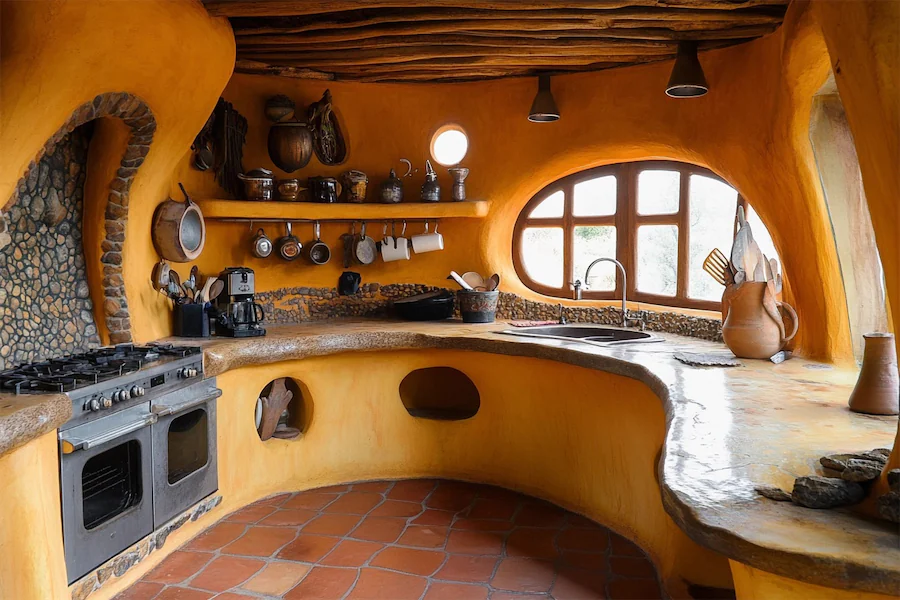A desert-inspired kitchen draws from the natural beauty and textures of arid landscapes, creating a warm and inviting space that blends rustic charm with modern functionality. This article explores the key features, applications, and considerations for designing a desert-inspired kitchen.
Key Features of Desert-Inspired Kitchens
- Earthy Color Palette: Utilizing warm, neutral tones such as terracotta, ochre, and sandy beige reflects the desert environment and establishes a cozy atmosphere.
- Natural Materials: Incorporating stone countertops, wooden cabinetry, and clay tiles adds texture and authenticity, connecting the space to the natural world.
- Textural Elements: Introducing woven textiles, such as rugs and wall hangings, alongside stone and exposed wood, enhances the tactile experience and visual interest.
- Open Shelving: Displaying ceramics and kitchenware on open shelves contributes to a functional yet decorative aesthetic, emphasizing simplicity and accessibility.
- Rustic Accents: Incorporating rustic shelving and slightly worn, threadbare rugs in rust red or dusty peach hues adds character and warmth to the kitchen.
Applications of Desert-Inspired Kitchens
- Residential Homes: Incorporating desert-inspired design elements can transform a standard kitchen into a warm and inviting space, enhancing the overall aesthetic appeal.
- Vacation Properties: Designing kitchens in holiday homes with desert influences can provide guests with a unique and immersive experience.
- Themed Restaurants: Establishments aiming to offer Southwestern or desert-themed cuisine can enhance the dining experience by featuring interiors that reflect desert-inspired kitchens.
Considerations When Designing a Desert-Inspired Kitchen
- Material Selection: Opt for durable, natural materials that can withstand the kitchen environment while maintaining the desired aesthetic.
- Lighting: Incorporate both natural and artificial lighting to highlight architectural features and create a warm, inviting atmosphere.
- Functional Layout: Ensure the kitchen layout supports efficient workflow while maintaining the open and airy qualities characteristic of desert-inspired design.
- Cultural Sensitivity: Respect the historical and cultural significance of desert design principles, ensuring that adaptations honor traditional architecture and practices.
Conclusion
A desert-inspired kitchen offers a harmonious blend of natural materials, earthy tones, and functional design. By embracing the principles of desert aesthetics, one can create a kitchen space that is both culturally rich and practically efficient, reflecting the timeless beauty of arid landscapes.
